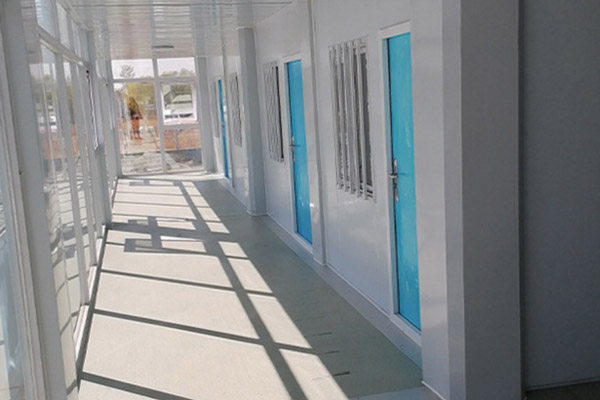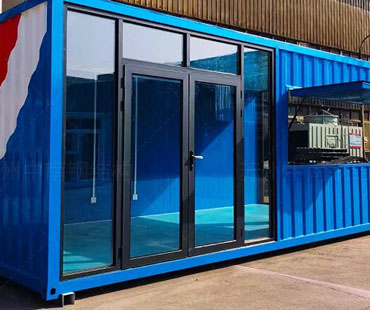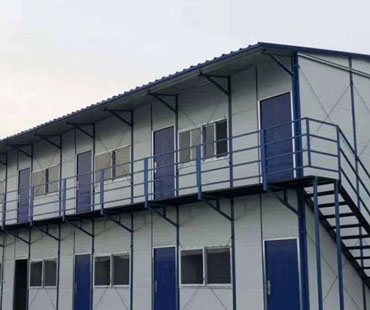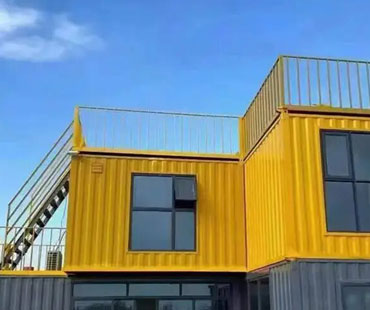In recent years, China has witnessed a remarkable transformation in the way art and architecture are conceived and executed, particularly with the rise of container art. This innovative movement transcends traditional boundaries, merging industrial design with creative expression to redefine urban spaces and foster community engagement. As shipping containers, once merely functional vessels for goods, find new life as artistic mediums, they are reshaping the cultural landscape of cities across the nation.
Container art involves the use of repurposed shipping containers as canvases and structural elements for artistic expression. This practice not only highlights sustainability—by recycling materials that might otherwise contribute to waste—but also challenges conventional notions of art and architecture. Artists and designers are transforming these steel boxes into vibrant galleries, performance spaces, cafes, and even homes, encouraging a dialogue between functionality and aesthetics.
The origins of container art can be traced back to the early 2000s, when urban artists began to see the potential of shipping containers as a medium for their work. However, it wasn’t until the past decade that this trend gained significant traction in China. The rapid urbanization and the accompanying need for innovative solutions to housing and commercial space have fueled the adoption of container art. Cities like Shanghai, Beijing, and Shenzhen have become hotspots for this creative movement, showcasing the versatility and adaptability of shipping containers.
Several high-profile projects have exemplified the rise of container art in China. One notable example is the **Container City** in Shanghai, a vibrant hub that houses artist studios, galleries, and performance spaces. This project not only provides affordable workspaces for emerging artists but also serves as a community gathering point, fostering collaboration and creativity.
Similarly, the **Dafen Oil Painting Village** in Shenzhen has embraced container art as a means to revitalize its artistic community. By transforming containers into studios and galleries, Dafen has attracted both local and international artists, turning the area into a dynamic cultural destination.

The rise of container art in China offers numerous benefits. Firstly, it promotes sustainability by repurposing materials that would otherwise contribute to environmental degradation. Secondly, it enhances urban aesthetics, adding color and creativity to otherwise dull landscapes. Finally, it fosters community engagement by creating spaces where people can gather, share ideas, and experience art in new ways.
Moreover, container art challenges the conventional art market, allowing artists to showcase their work outside traditional galleries. This democratization of art makes it more accessible to the public, inviting diverse audiences to engage with creativity in their everyday lives.
Despite its many advantages, the container art movement is not without challenges. Some critics argue that the trend can veer into commercialization, where the original intent of artistic expression is overshadowed by profit motives. Additionally, there are concerns about the durability and safety of container structures, particularly in urban environments that may face harsh weather conditions.
Addressing these challenges requires a commitment to maintaining the integrity of the artistic vision while ensuring that container art projects are safe, sustainable, and community-focused.
Looking ahead, the future of container art in China appears promising. As more cities recognize the potential of this movement, we can expect to see an increase in collaborative projects that merge art, architecture, and community development. Educational initiatives aimed at teaching young artists about the possibilities of container art will also play a crucial role in sustaining this trend.
Furthermore, the ongoing dialogue around sustainability and urban renewal will likely continue to drive interest in container art. As cities strive to become more livable and environmentally friendly, the adaptability of shipping containers will make them an attractive option for innovative design solutions.
The rise of container art in China represents a fascinating convergence of industrial design and creative space, highlighting the transformative power of art in urban environments. As artists and designers continue to explore the possibilities of repurposed shipping containers, they not only redefine how we perceive art and architecture but also contribute to the sustainability and vibrancy of our cities. This movement is a testament to the dynamic nature of creativity, proving that even the most utilitarian objects can inspire beauty and community when viewed through an artistic lens.


